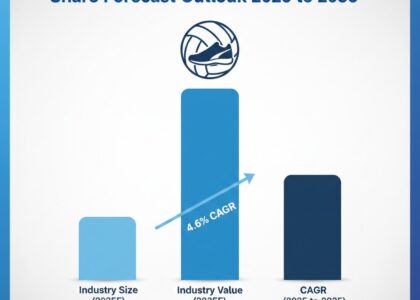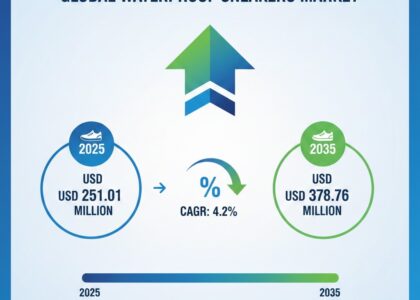
The wireless and mobile backhaul equipment market is set for significant growth from 2025 to 2035, propelled by the accelerating deployment of 5G infrastructure, surging demand for high-speed mobile connectivity, and the rapid proliferation of Internet of Things (IoT) applications across both urban and rural environments. Valued at USD 48.93 billion in 2025, the market is projected to reach USD 152.52 billion by 2035, registering a robust compound annual growth rate (CAGR) of 12% throughout the forecast period. As mobile network operators increasingly seek efficient, scalable, and low-latency solutions to handle the explosion of data traffic from mobile devices, connected vehicles, industrial IoT, and smart city deployments, the need for reliable and high-capacity backhaul infrastructure becomes paramount.
Wireless and mobile backhaul solutions play a critical role in linking the core network with small cells, macro cells, and other access points that form the foundation of next-generation mobile networks. With the shift from 4G LTE to 5G, the traditional backhaul infrastructure is being reimagined to support faster speeds, reduced latency, and higher device densities. Technologies such as microwave, millimeter-wave (mmWave), satellite, and fiber-based backhaul are being combined in hybrid models to ensure optimal performance, particularly in dense urban areas and underserved rural regions. Additionally, the evolution of network architectures like Cloud-RAN (C-RAN) and Open RAN is further shaping backhaul requirements, pushing vendors to innovate in terms of cost-efficiency, energy consumption, and dynamic scalability.
Get Ahead with Our Report: Request Your Sample Now!
https://www.futuremarketinsights.com/reports/sample/rep-gb-2389
Key Takeaways
The global wireless and mobile backhaul equipment market is witnessing substantial momentum due to the growing need for faster data transmission, increased mobile video consumption, and support for bandwidth-intensive applications. Network operators are under pressure to upgrade their infrastructure to accommodate the rising expectations of enterprise clients, streaming platforms, and mobile subscribers. Backhaul solutions must not only offer high throughput but also ensure network reliability and real-time responsiveness. This has led to increased investments in next-generation transport solutions that can handle massive data volumes while maintaining minimal latency across heterogeneous network environments.
The demand is particularly strong in developing economies, where mobile-first internet penetration is rising rapidly. Governments and telecom regulators are also playing a supportive role by releasing additional spectrum and promoting infrastructure sharing, which in turn drives backhaul modernization efforts. Meanwhile, private network deployments by enterprises in manufacturing, logistics, and healthcare are also contributing to the need for secure and dedicated backhaul systems.
Emerging Trends in the Global Market
One of the most prominent trends in the wireless and mobile backhaul equipment market is the adoption of millimeter-wave technology to meet the ultra-high capacity needs of 5G networks. Millimeter-wave frequencies, though previously limited in application due to their short range and signal attenuation, are now being used more effectively with advanced beamforming, dense network topologies, and low-cost small cell deployments. This enables higher bandwidth transmission in urban environments and complements fiber-based solutions in areas where trenching is cost-prohibitive or logistically challenging.
Another significant trend is the growing integration of artificial intelligence and machine learning into network backhaul management. These technologies are being used to predict traffic congestion, optimize routing, and automate resource allocation to improve overall network efficiency. Additionally, software-defined networking (SDN) and network function virtualization (NFV) are transforming backhaul infrastructure from hardware-centric to software-based models, allowing telecom providers to scale dynamically and reduce operational complexity.
The rise of edge computing is also influencing backhaul requirements. As more data processing moves closer to the source in edge locations, the backhaul network must efficiently support bidirectional traffic with low latency and enhanced security. Energy-efficient equipment and green backhaul solutions are gaining importance in response to sustainability goals and the rising energy costs associated with dense network deployments.
Significant Developments in Global Sector: Trends and Opportunities in the Market
The wireless and mobile backhaul equipment market is seeing rapid developments as vendors race to address the diverse needs of telecom operators, private networks, and government initiatives. With global 5G rollouts accelerating, operators are upgrading their microwave and fiber links to accommodate multi-gigabit backhaul capacities. Emerging economies in Asia-Pacific, Africa, and Latin America are especially active in deploying hybrid backhaul networks to balance cost and performance. Companies are focusing on modular and scalable backhaul equipment to facilitate faster deployments and seamless upgrades.
The market also presents opportunities in rural connectivity, where traditional wired infrastructure is either cost-prohibitive or logistically unfeasible. Wireless backhaul, particularly using satellite and mmWave solutions, is proving to be a viable alternative. Moreover, industrial 5G and private LTE networks are creating new demand for customizable backhaul setups in factories, campuses, and logistics hubs. These use cases require highly secure, ultra-reliable, and low-latency backhaul networks that can support autonomous operations, remote monitoring, and augmented reality (AR) applications.
Recent Developments in the Market
Several major developments have shaped the wireless and mobile backhaul equipment market in recent years. Leading vendors have introduced new product lines featuring enhanced spectral efficiency, integrated intelligence, and simplified deployment capabilities. Ericsson, for instance, launched its MINI-LINK microwave solutions optimized for 5G with higher capacity and lower power consumption. Nokia unveiled a new Wavence product portfolio focusing on scalability and performance for 5G transport networks. Huawei has enhanced its microwave backhaul systems with AI-based optimization and real-time fault detection to support ultra-reliable communication for 5G and beyond.
Other developments include increased investment in open and interoperable backhaul ecosystems. The Telecom Infra Project (TIP) is promoting open transport networks, enabling multi-vendor deployments and reducing costs for operators. Furthermore, collaborations between telecom companies and satellite service providers are enabling high-speed backhaul connectivity in hard-to-reach areas. These initiatives are expanding market access and improving digital inclusion globally.
Exhaustive Market Report: A Complete Study
https://www.futuremarketinsights.com/reports/wireless-and-mobile-backhaul-equipment-market
Competition Outlook
The competitive landscape of the wireless and mobile backhaul equipment market is dynamic, with a mix of established players and emerging technology providers driving innovation. Major vendors include Ericsson, Huawei Technologies, Nokia Corporation, ZTE Corporation, Cisco Systems, NEC Corporation, Ceragon Networks, Aviat Networks, Infinera Corporation, and Fujitsu Limited. These companies are differentiating themselves by offering end-to-end backhaul solutions, customizable architectures, and AI-powered network optimization. Strategic partnerships, mergers, and R&D investments are common as vendors seek to expand their product portfolios, geographic reach, and customer base.
Key Segmentations
The wireless and mobile backhaul equipment market is segmented by equipment type, network technology, application, and region. Equipment types include microwave, millimeter-wave, and fiber backhaul solutions, with microwave and fiber dominating due to their widespread use and maturity. Network technologies span 3G, 4G LTE, and 5G, with the 5G segment growing the fastest due to the ongoing global rollout. Applications include telecom operator networks, private enterprise networks, and public safety communications. Geographically, Asia-Pacific leads the market due to its rapid 5G adoption and population density, followed by North America and Europe, which are focused on next-gen infrastructure modernization.
About Future Market Insights (FMI)
Future Market Insights, Inc. (ESOMAR certified, recipient of the Stevie Award, and a member of the Greater New York Chamber of Commerce) offers profound insights into the driving factors that are boosting demand in the market. FMI stands as the leading global provider of market intelligence, advisory services, consulting, and events for the Packaging, Food and Beverage, Consumer Technology, Healthcare, Industrial, and Chemicals markets. With a vast team of 400 analysts worldwide, FMI provides global, regional, and local expertise on diverse domains and industry trends across more than 110 countries.
Contact Us:
Future Market Insights Inc.
Christiana Corporate, 200 Continental Drive,
Suite 401, Newark, Delaware – 19713, USA
T: +1-845-579-5705
For Sales Enquiries: sales@futuremarketinsights.com
Website: https://www.futuremarketinsights.com
LinkedIn| Twitter| Blogs | YouTube





